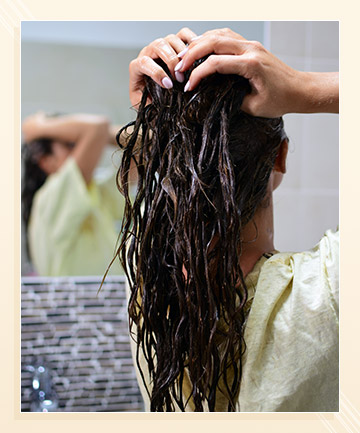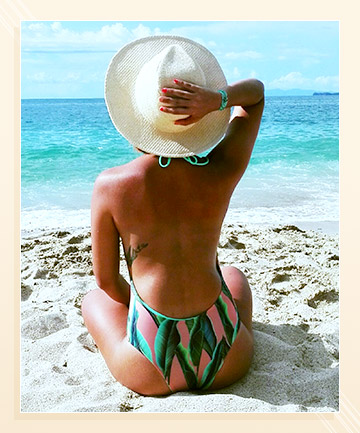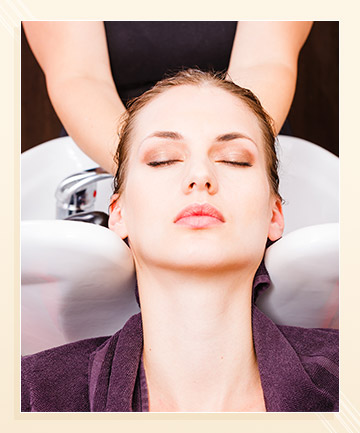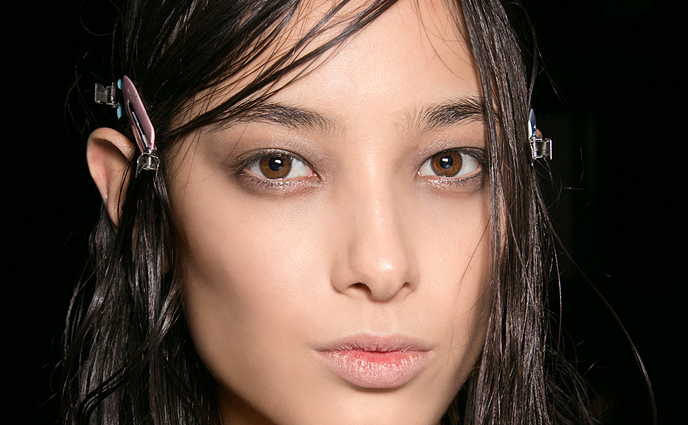Conditioner doesn't just make color-treated hair look and feel smoother; it actually closes the cuticle, counteracting the cuticle-opening effect of shampoo. A great conditioner also infuses moisturizing ingredients beneath the cuticle, nourishing hair from the inside out.
"Use deep-conditioning treatments every two weeks to prevent breakage," advises Tym Wallace, a celebrity hairstylist. A great conditioning mask will "nourish the hair and scalp and alleviate dryness, which can lead to hair breakage," he says.
Trujillo recommends layering conditioning hair products on color-treated or bleached hair. "I make sure all my clients have a leave-in conditioner ... a good oil or serum, and a good hair mask," she says. Focus any leave-in hydrating products on the ends of hair, where you need moisture most.
Image via Getty
"Use deep-conditioning treatments every two weeks to prevent breakage," advises Tym Wallace, a celebrity hairstylist. A great conditioning mask will "nourish the hair and scalp and alleviate dryness, which can lead to hair breakage," he says.
Trujillo recommends layering conditioning hair products on color-treated or bleached hair. "I make sure all my clients have a leave-in conditioner ... a good oil or serum, and a good hair mask," she says. Focus any leave-in hydrating products on the ends of hair, where you need moisture most.
Image via Getty
Crap news for outdoorsy types: UV light is a major softness- and color-sucker for hair. Sun exposure leeches proteins and pigment from hair, making a UV-protecting product essential for colored hair. Luckily, there are tons of sprays, serums, stylers and masks infused with sunscreen that make protecting your hair from UV damage incredibly easy. Another simple solution: Wear a hat when you're outside.
Chlorine and salt water are two other warm-weather culprits that hurt colored and bleached hair. Salt water, of course, dehydrates hair. But chlorine is even more nefarious than salt water: It swells your hair's cuticles, breaks its chemical bonds, deposits color-distorting minerals and saps it of melanin. When you go swimming, limit the amount of salt water or chlorinated water that your hair absorbs by pre-wetting it with tap water and slicking on some conditioner.
Image via Getty
Chlorine and salt water are two other warm-weather culprits that hurt colored and bleached hair. Salt water, of course, dehydrates hair. But chlorine is even more nefarious than salt water: It swells your hair's cuticles, breaks its chemical bonds, deposits color-distorting minerals and saps it of melanin. When you go swimming, limit the amount of salt water or chlorinated water that your hair absorbs by pre-wetting it with tap water and slicking on some conditioner.
Image via Getty
You might be looking forward to your next hair-coloring sesh like it's Christmas morning, but don't overdo it. Wait at least five or six weeks between coloring services to keep your hair healthy. At-home tinted glosses and root touch-up products can keep your color looking fresh for weeks and weeks. When it's time to color again, you or your stylist should touch up only the roots -- no double-processing your ends, especially if you bleach.
Even if you're growing out your hair, getting a quick trim with each touch-up is ideal. If you're scissor-shy, ask your stylist to "dust" the ends of your hair, which involves trimming a quarter-inch or less to eliminate split ends.
Remember: Healthy hair holds onto color better than unhealthy hair. The better you care for your hair, the less often you'll be hankering for a color service.
Image via Getty
Even if you're growing out your hair, getting a quick trim with each touch-up is ideal. If you're scissor-shy, ask your stylist to "dust" the ends of your hair, which involves trimming a quarter-inch or less to eliminate split ends.
Remember: Healthy hair holds onto color better than unhealthy hair. The better you care for your hair, the less often you'll be hankering for a color service.
Image via Getty







